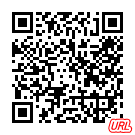Fifty Sounds (五十音,gojūon) - To help you easily learn basic Japanese language |
| この情報はストアのものより古い可能性がございます。 | ||||
| 価格 | 360円 | ダウンロード |
||
|---|---|---|---|---|
| ジャンル | 教育 | |||
サイズ | 1.6MB | |||
| 開発者 | yan xing | |||
| 順位 |
| |||
| リリース日 | 2012-12-17 14:49:15 | 評価 | 評価が取得できませんでした。 | |
| 互換性 | iOS 6.0以降が必要です。 iPhone、iPad および iPod touch 対応。 | |||
To learn Japanese language, the first thing you need do is learning 五十音。 This app can help you learn basic japanese language easily and quickly, I remember it only use 6 hours(3 days , 2hours/day) as a developer. I think you can remember it more quickly than me.
The gojūon (五十音 lit. Fifty Sounds?) is a Japanese ordering of kana (loosely a Japanese "alphabetical order"), named for the 5×10 grid in which the characters are displayed. Each kana, which may be a hiragana or katakana character, corresponds to one sound in the Japanese language. As depicted at the right using hiragana characters, the sequence begins with あ (a), い (i), う (u), え (e), お (o), then continues with か (ka), き (ki), く (ku), け (ke), こ (ko), and so on for a total of ten rows of five.
Although nominally containing 50 characters, the grid is not completely filled, and, further, there is an extra character added outside the grid at the end: with 5 gaps and 1 extra character, the current number of distinct kana in a syllabic chart in modern Japanese is therefore 46. Some of these gaps have always existed as gaps in sound: there was no yi or wu in Old Japanese, and ye disappeared in Late Old Japanese, predating the kana; the kana for i, u and e double up for those phantom values. Also, with the spelling reforms after World War II, the kana for wi and we were replaced with i and e, the sounds they had developed into. The kana for syllabic n (hiragana ん) is not part of the grid, as it was introduced long after gojūon ordering was devised (previously mu (hiragana む), was used for this sound).
The gojūon (五十音 lit. Fifty Sounds?) is a Japanese ordering of kana (loosely a Japanese "alphabetical order"), named for the 5×10 grid in which the characters are displayed. Each kana, which may be a hiragana or katakana character, corresponds to one sound in the Japanese language. As depicted at the right using hiragana characters, the sequence begins with あ (a), い (i), う (u), え (e), お (o), then continues with か (ka), き (ki), く (ku), け (ke), こ (ko), and so on for a total of ten rows of five.
Although nominally containing 50 characters, the grid is not completely filled, and, further, there is an extra character added outside the grid at the end: with 5 gaps and 1 extra character, the current number of distinct kana in a syllabic chart in modern Japanese is therefore 46. Some of these gaps have always existed as gaps in sound: there was no yi or wu in Old Japanese, and ye disappeared in Late Old Japanese, predating the kana; the kana for i, u and e double up for those phantom values. Also, with the spelling reforms after World War II, the kana for wi and we were replaced with i and e, the sounds they had developed into. The kana for syllabic n (hiragana ん) is not part of the grid, as it was introduced long after gojūon ordering was devised (previously mu (hiragana む), was used for this sound).
ブログパーツ第二弾を公開しました!ホームページでアプリの順位・価格・周辺ランキングをご紹介頂けます。
ブログパーツ第2弾!
アプリの周辺ランキングを表示するブログパーツです。価格・順位共に自動で最新情報に更新されるのでアプリの状態チェックにも最適です。
ランキング圏外の場合でも周辺ランキングの代わりに説明文を表示にするので安心です。
サンプルが気に入りましたら、下に表示されたHTMLタグをそのままページに貼り付けることでご利用頂けます。ただし、一般公開されているページでご使用頂かないと表示されませんのでご注意ください。
幅200px版
幅320px版
Now Loading...

「iPhone & iPad アプリランキング」は、最新かつ詳細なアプリ情報をご紹介しているサイトです。
お探しのアプリに出会えるように様々な切り口でページをご用意しております。
「メニュー」よりぜひアプリ探しにお役立て下さい。
Presents by $$308413110 スマホからのアクセスにはQRコードをご活用ください。 →
Now loading...




